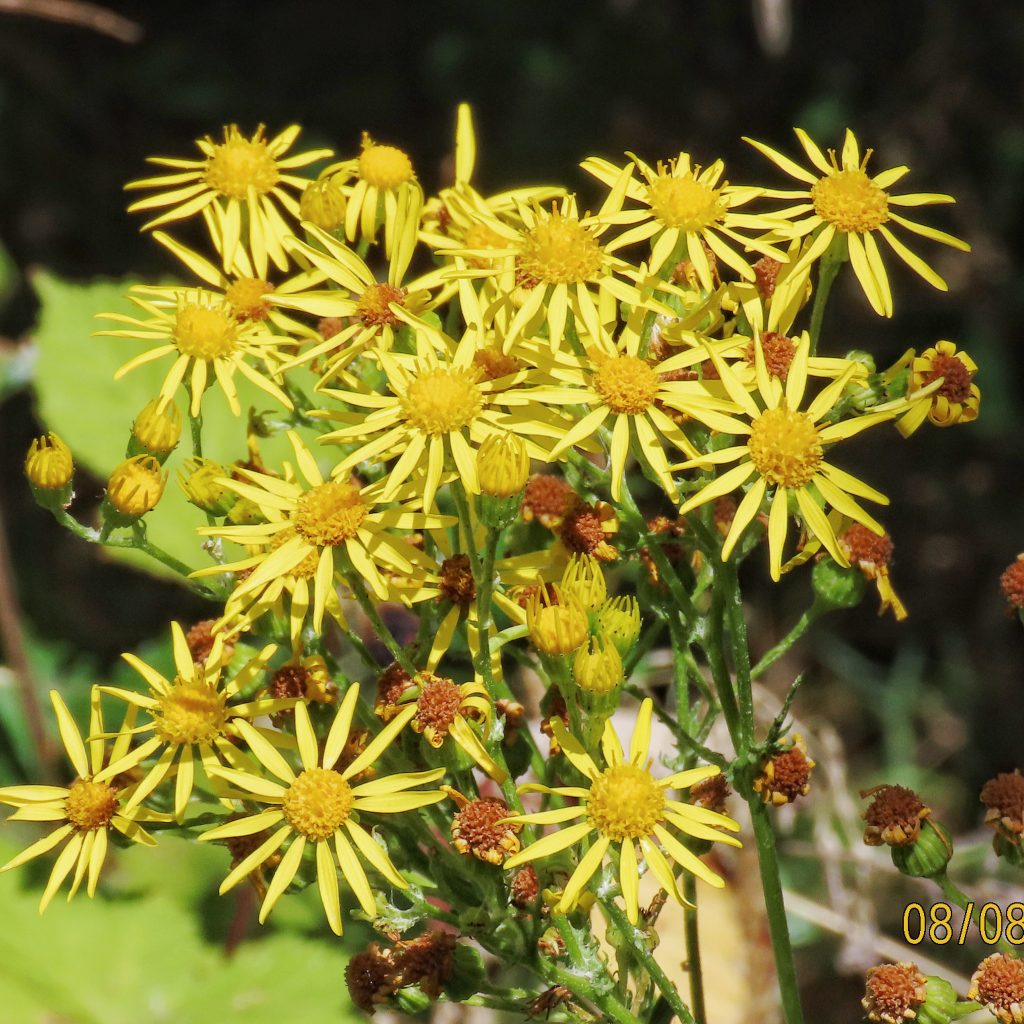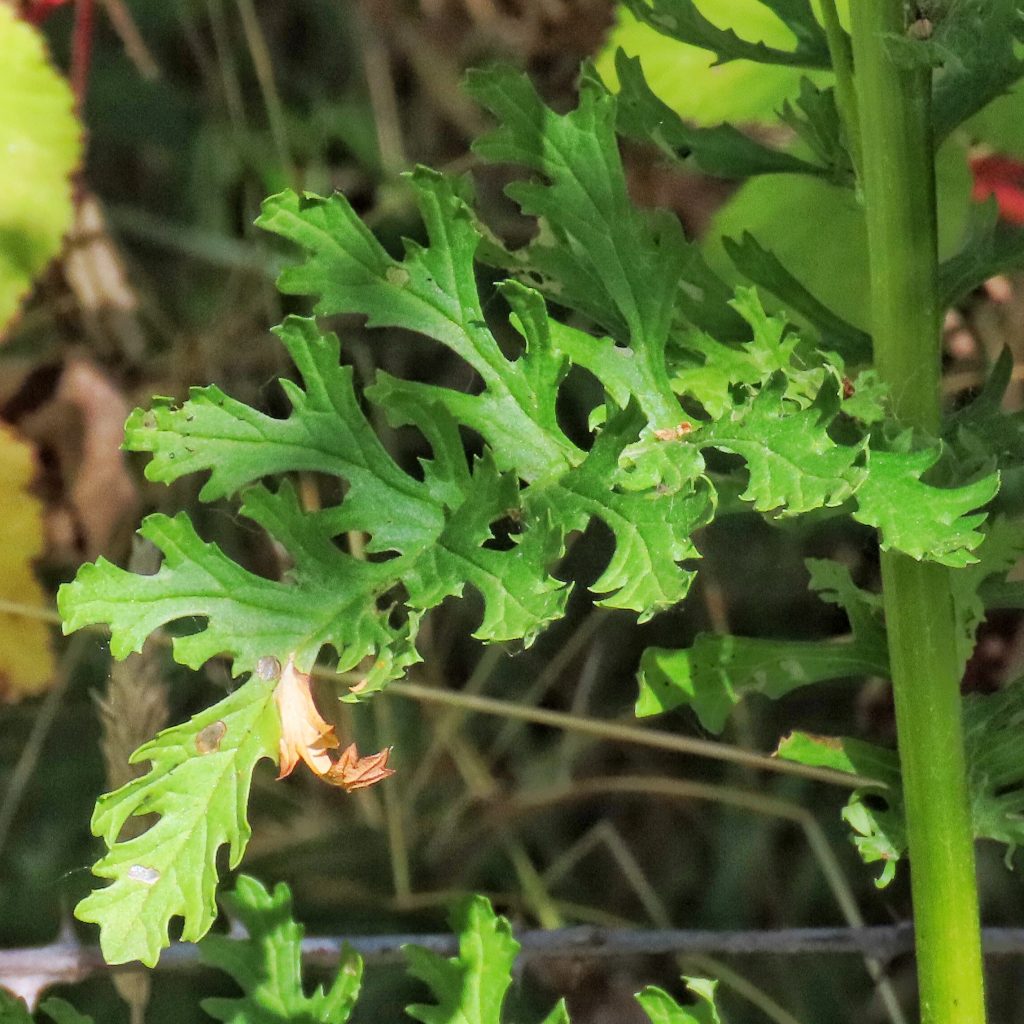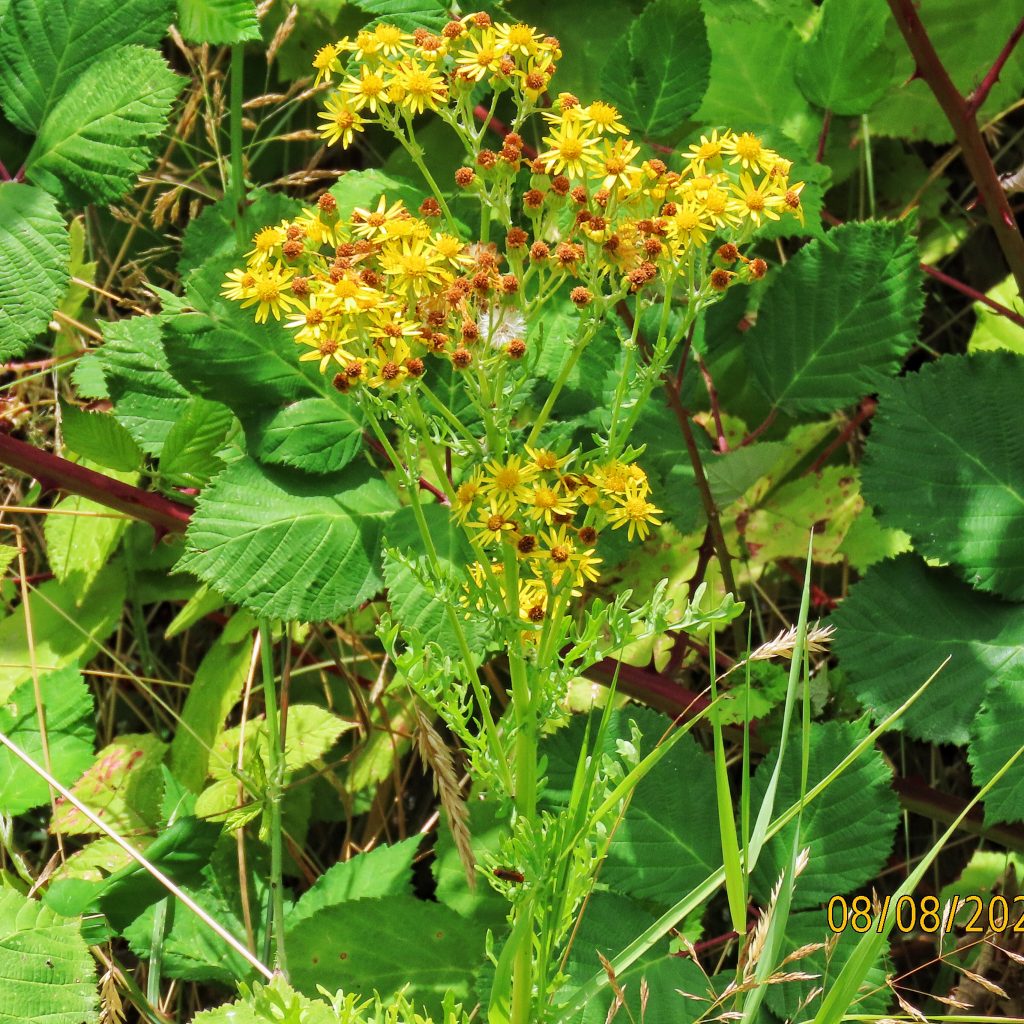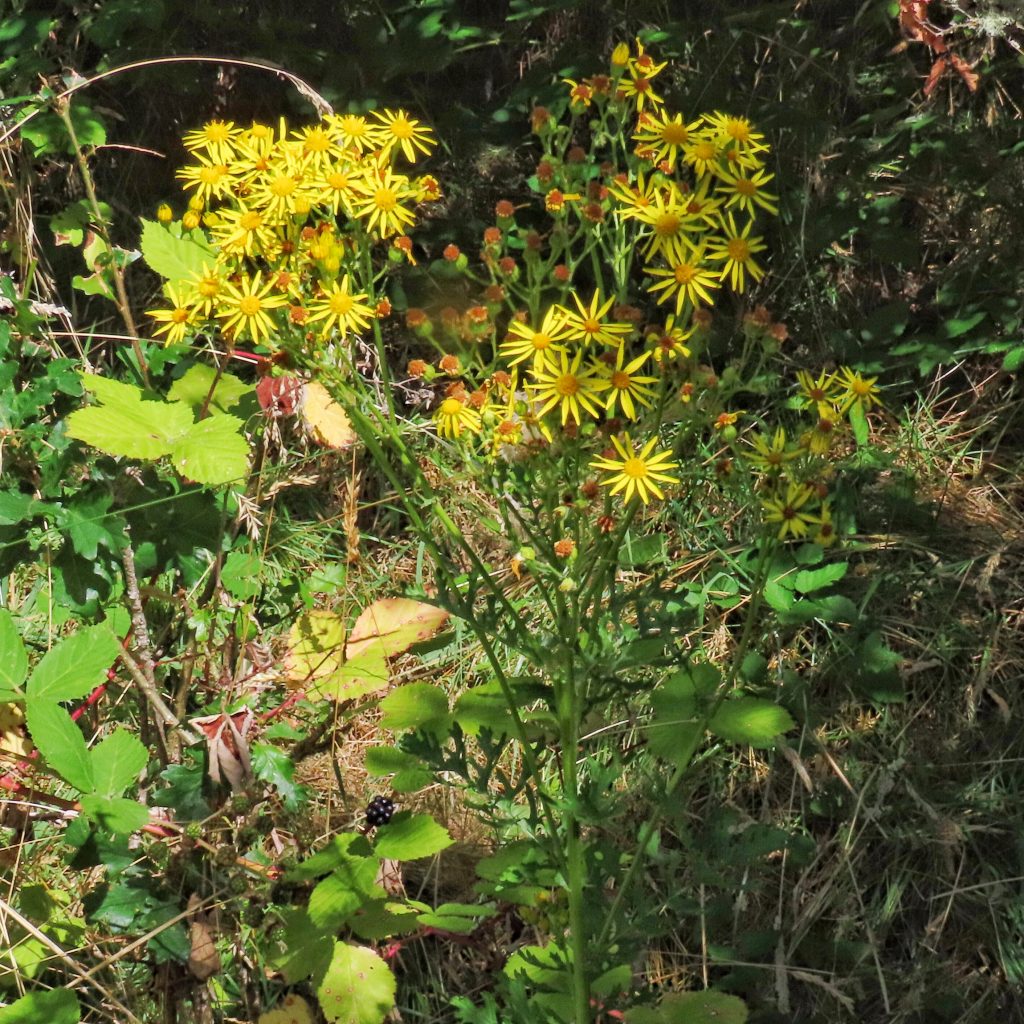
It is possible that Tansy Ragwort is not quite the bugaboo people think it is. Yes, it is poisonous to livestock, but they rarely eat the green plant. It is in hay where it is accidentally consumed, but anyone making hay for their own stock, or cutting and selling hay, should already be vigilant about removing this and several other common poisonous species like members of the genera Lupinus and Ranunculus, neither of which provoke such fear, loathing, and regulatory concern.
There is the fact that, with their high sugar content (it was rated as the seventh highest [kg of sugar/ha/year] nectar source in the UK in one study) Tansy Ragwort is attractive to bees, which then produce honey which is tainted by the pyrrolizidine alkaloids in the nectar. And bees cast a wide net in their search, sometimes ranging as much as 2 miles from the hive. But the honey produced from Tansy Ragwort is off color, very bitter, and it is unlikely that someone would consume enough of it to become ill.

None of this is to say that it is harmless. Misguided herbalists should definitely not be prescribing it because of its likely deleterious effects. Certainly it needs to be controlled in agricultural settings. But it provides an excellent nectar source for many insects during late summer, an otherwise less than optimal time, which lack is primarily due to habitat destruction and the kind of herbicide abuse that is engendered by the demonizing of certain weeds (like this one), which has eliminated many of the native species which would otherwise be filling that gap.
Tansy Ragwort is a larval host to several Lepidoptera, including the moths Udea profundalis, some members of the genus Eupethecia, Estigmene acrea (Salt Marsh Moth), and of course Tyria jacobaeae (Cinnabar Moth), which was imported as a biological control, since their larvae are virtually obligate to this species. Longitarsus jacobaeae (Tansy Ragwort Flea Beetle) has also been imported as a biological control. The larvae feed on the roots of this plant, and the adults consume the foliage.
This plant has erect, unbranched stems up to 4’ tall. Leaves are deeply and irregularly lobed, and the lower leaves fall off before blooming. Flowers have 13 rays with a central corona, and are in tight clusters atop the stems. It is native to Eurasia, but has become naturalized throughout the western side of our region in disturbed and agricultural ground. It blooms all summer.

https://en.m.wikipedia.org/wiki/Jacobaea_vulgaris
https://www.nwcb.wa.gov/weeds/tansy-ragwort
https://friendsoftheearth.uk/nature/ragwort-poisonous-ragwort-mythbuster?amp
https://ir.library.oregonstate.edu/downloads/rf55z833w
Size- Up to 4’ tall
Habitat- Damp, disturbed and agricultural ground
Range- West of the Cascades
Blooms- All summer

3 thoughts on “Jacobaea vulgaris (Tansy Ragwort)”